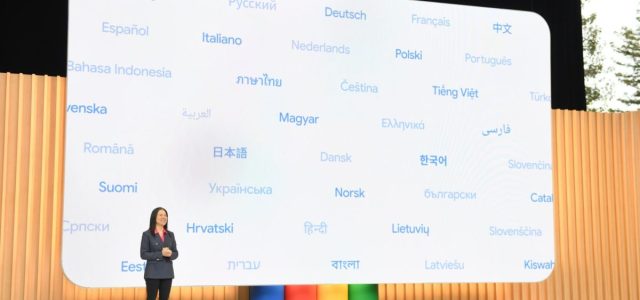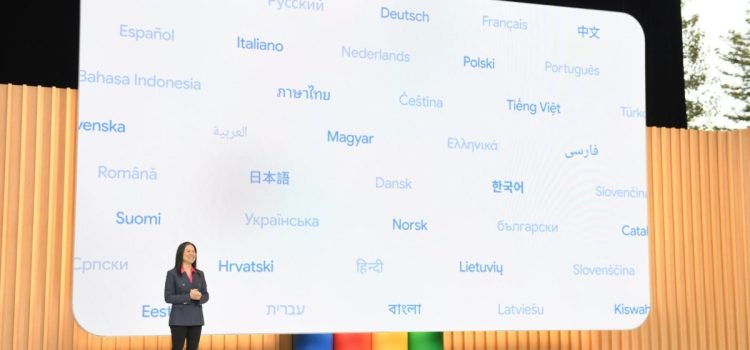


Join top executives in San Francisco on July 11-12, to hear how leaders are integrating and optimizing AI investments for success. Learn More
In November 2022, ChatGPT was first unleashed by OpenAI. Google (and everyone else) has been playing catch-up ever since.
Google, with its own conversational AI tool, Bard, is now done playing catch-up and is looking to move well beyond the capabilities of ChatGPT. At the Google I/O conference today, multiple updates and innovations were announced to fuel the continued evolution of Bard now and for months to come.
First announced in February, Bard struggled early to gain traction for a host of reasons, not the least of which was the fact that — unlike ChatGPT which is freely and widely available — Bard had a waitlist with limited availability. Google is now removing the waitlist and opening up Bard to a global audience.
Google also announced a series of innovations designed to outpace ChatGPT, including multi-language support, visual responses, the ability to export, and new integrations.
Event
Transform 2023
Join us in San Francisco on July 11-12, where top executives will share how they have integrated and optimized AI investments for success and avoided common pitfalls.
“Large language models have captured the world’s imagination, changing how we think about the future of computing,” Sissie Hsiao, VP and GM of Google Assistant and Bard, said during a Google I/O keynote. “We launched Bard as a limited-access experiment on a lightweight large language model to get feedback and iterate. And since then, the team has been working hard to make rapid improvements and launch them quickly.”
Shakespeare isn’t the power behind the Bard — it’s PaLM 2
The term “bard” is a word used to describe a storyteller and is a moniker that is also commonly associated with famous English playwright William Shakespeare.
Bard’s words aren’t written by Shakespeare, or any other human (at least, not directly), but rather are generated from Google’s newest large language model (LLM) PaLM 2, which was also announced at today’s Google I/O event.
PaLM 2 provides Bard with significantly enhanced generative AI capabilities that exceed the initial functionality that Bard launched with earlier this year.
“With PaLM 2, Bard’s math, logic and reasoning skills made a huge leap forward, underpinning its ability to help developers with programming,” Hsiao said. “Bard can now collaborate on tasks like code generation, debugging and explaining code snippets.”
With code generation, Bard is also going a step further in its bid to help outpace OpenAI’s capabilities. Hsiao said that starting next week, Bard will integrate precise code citations to help developers understand exactly where code snippets have come from.
What good is a Bard if you can’t share its work?
Another limitation of the original Bard was that responses and generated content remained in Bard, but that’s also about to change.
Hsiao announced that, starting today, Bard is adding export actions for Gmail and Google Docs, making it easy to integrate generated content. Going a step further, she announced that more extensibility is coming to Bard with the launch of tools and extensions.
“As you collaborate with Bard, you’ll be able to tap into services from Google and extensions with partners to let you do things never before possible,” Hsiao said.
If a picture is worth a thousand words, Bard is going to get a lot more vocal
To date, both ChatGPT and Bard have been text-based tools providing text-based responses. That’s another area where Google is looking to outpace its rival.
In the next few weeks, Google will be updating Bard to provide images as part of responses to prompts.
“It’s incredible what Bard can already do with text; but images are such a fundamental part of how we learn and express,” Hsiao said. “So in the next few weeks, Bard will become more visual, both in its responses and your prompts.”
Going beyond what Bard itself can directly do with images, Hsiao said that there will be an integration with Adobe Firefly to enable users to generate entirely new images directly within Bard.
Bard going multilingual
English isn’t the only language that Google’s users speak and soon it won’t be the only language that Bard supports either.
The plan is for Bard to support 40 different languages, starting today with Japanese and Korean, with more to come in the following months.
“It’s amazing to see the rate of progress so far with more advanced models. So many new capabilities and the ability for even more people to collaborate with Bard,” Hsiao said.
VentureBeat’s mission is to be a digital town square for technical decision-makers to gain knowledge about transformative enterprise technology and transact. Discover our Briefings.
